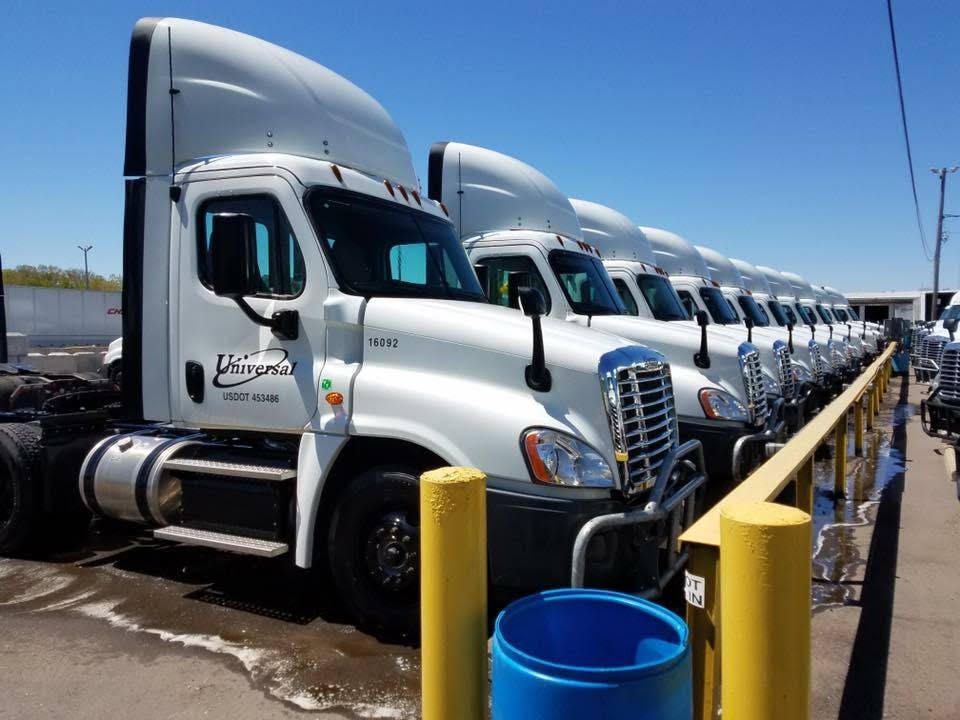
Whether you’re running a one-truck operation or managing a growing fleet of power washing vehicles, keeping them well-maintained is vital to your business. 🚛💨 A breakdown not only leads to expensive repairs—it costs you jobs, credibility, and valuable time.
In this article, we’ll dive deep into how to manage vehicle maintenance for a power washing business, from checklists and scheduling to cost-saving strategies and tools. Let’s keep those wheels turning! 🛞🔧
🚚 Why Fleet Maintenance Is Critical in Power Washing
Unlike businesses where vehicles are just for commuting, power washing trucks and vans are mobile job sites. They haul:
- Pressure washing machines
- Water tanks
- Hoses and reels
- Surface cleaners
- Cleaning solutions
That’s a lot of wear and tear. A flat tire or engine trouble can delay a job and leave customers waiting—not a good look. 👎
Poor maintenance can lead to:
- Unplanned downtime
- Missed appointments
- Loss of customer trust
- Higher long-term repair bills
- Reduced vehicle lifespan
In short, proactive fleet maintenance = higher uptime and greater profitability. ✅📈
🛠️ Creating a Preventive Maintenance Schedule
A preventive maintenance (PM) schedule ensures that your vehicles are serviced before issues arise. This is not the time for “wait until it breaks” thinking.
🔄 Common PM tasks include:
- Oil and filter changes
- Brake inspections
- Tire pressure and tread checks
- Battery testing
- Transmission fluid checks
- Coolant flushes
- Lights, wipers, belts, and hoses inspection
📅 Suggested Maintenance Intervals:
- Every 5,000–7,500 miles: Oil change, tire rotation, fluid check
- Every 15,000 miles: Air filters, brake inspection
- Every 30,000 miles: Transmission fluid, belts, hoses
Keep in mind that heavy loads (like water tanks) can accelerate wear, so your intervals may need to be tighter than the manufacturer’s default.
Browse Amazon Here For Commercial Pressure Washers And Accessories
📝 Fleet Maintenance Checklist (Weekly)
Use this simple checklist to stay on top of issues:
✅ Check oil level and color
✅ Inspect tires (pressure + wear)
✅ Ensure all lights work
✅ Test brakes
✅ Top off windshield washer fluid
✅ Clean cab interior
✅ Check for leaks under vehicle
✅ Secure all mounted equipment
A 10-minute walk-around each week can prevent a $1,000 surprise later. 😬💸
🧾 Tracking Maintenance: Old School vs. Digital
📘 Manual Logs
Some small operators still use a clipboard log in each truck. This works, but it’s easy to forget entries or misplace records.
📱 Digital Tools (Recommended)
There are great fleet management software options tailored for small service businesses:
- Samsara
- Fleetio
- Whip Around
- AUTOsist
These tools let you:
- Get maintenance alerts
- Track mileage automatically
- Log inspections via mobile
- Manage multiple vehicles with ease
For a solo operator, even a well-organized Google Sheet can do the trick as long as you’re consistent.
🔧 Managing Repairs vs. Replacements
When a truck or van starts showing its age, how do you decide whether to keep repairing or replace it?
Consider:
- Frequency of breakdowns
- Age/mileage of the vehicle
- Repair costs vs. vehicle value
- Downtime cost (missed revenue)
As a rule of thumb: If one year’s worth of repairs exceeds half the value of the vehicle, it’s probably time to replace it. ⚠️🚨
💰 Budgeting for Fleet Maintenance
Set aside a portion of your monthly revenue for maintenance. A good rule is:
5–8% of monthly vehicle value or income per vehicle
Example:
If you have a $30,000 truck, budget $150–$250/month for maintenance and repair reserves.
Also, don’t forget insurance deductibles—if you rely on your vehicles for work, being underinsured or unprepared can be a killer.
👷 Training Staff on Vehicle Responsibility
Your team should know:
- How to perform weekly inspections
- What to report and when
- Not to ignore warning lights 🚨
- How to safely load and secure equipment
- Proper fueling procedures (some units require diesel, not gas!)
Having a vehicle policy in your employee handbook with signed acknowledgment goes a long way toward accountability. 📑
🧽 Vehicle Cleanliness = Brand Image
In power washing, image matters. A clean, well-maintained vehicle:
- Impresses customers
- Builds trust
- Enhances brand recognition
Establish a routine for exterior washing and interior tidiness. A branded wrap won’t look great if it’s covered in mud. 🧼✨
🔄 Long-Term Strategy: Replacement Cycles
Plan to replace vehicles every 5–7 years or around 150,000–200,000 miles, depending on usage. Don’t wait until the truck dies on the highway to start shopping.
You can:
- Track vehicle depreciation in your books
- Use IRS Section 179 deductions for new purchases
- Lease vehicles with built-in maintenance agreements if scaling fast
📊 Final Thoughts
Managing fleet maintenance isn’t just about fixing trucks—it’s about protecting your revenue stream, reputation, and operational efficiency. 🚚💼
Whether you’re solo or have five trucks on the road, make maintenance a priority. Create systems, use tech, train your team, and budget wisely.
Your customers may never see the brake pads you changed last week—but they’ll notice when you show up on time, every time. ⏱️👏
Browse Amazon Here For Commercial Pressure Washers And Accessories






